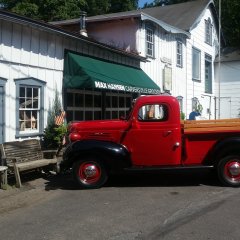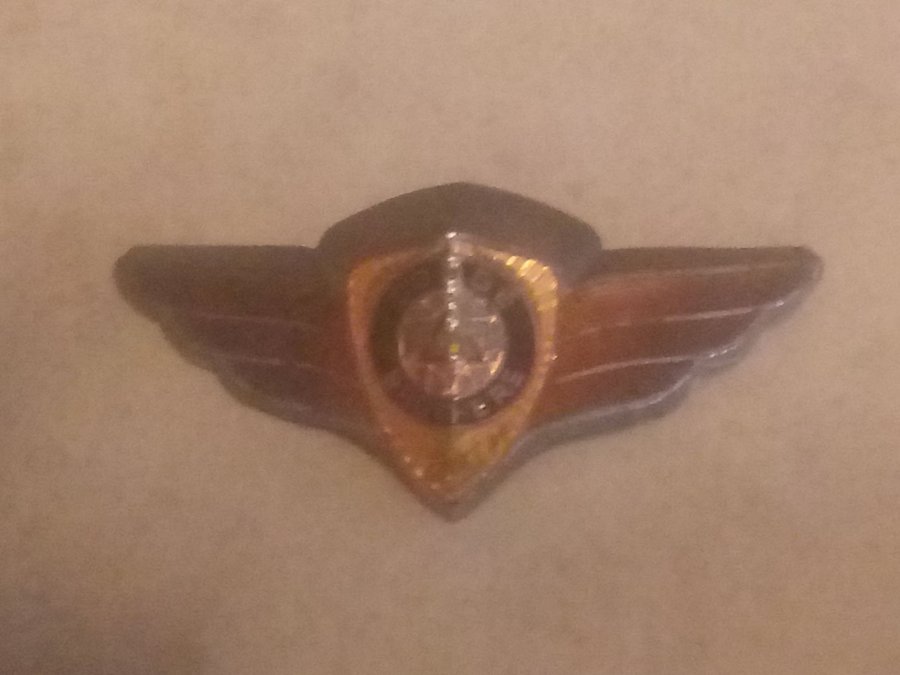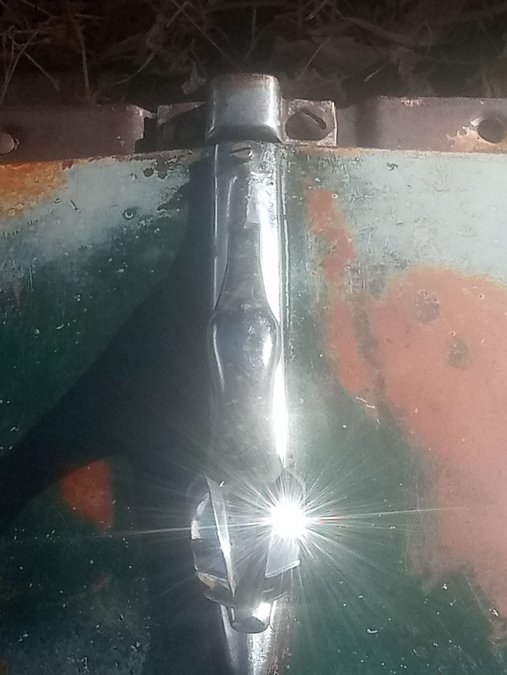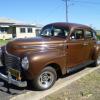Leaderboard
Popular Content
Showing content with the highest reputation on 02/02/2020 in all areas
-
Today I had a rare chance to beat the groundhog out of hibernation. Not many Canadians get to do that on Feb 1. Snow is gone! More could come yet for sure, but I took the opportunity today to capitalize. A great day here today for a cruise.2 points
-
2 points
-
Feb. 1, 2020: Going to a barn dance; Feb. 1952? Just kidding ?. We could pretend by just glancing at the photo. Well not really with my Buick and Caddy in the background.2 points
-
I feel fortunate that Don that car and it's owner (I'm blanking on his name at the moment) did stop at my garage. They were on a long roadtrip and their generator was giving them issues. I grabbed a spare, dropped it to rebuilt on my lunch break, picked it up after work, and them met up with the guys for dinner.1 point
-
1 point
-
well, if he was in Georgia he would have definitely seen his shadow or his local optician...1 point
-
1 point
-
1 point
-
I have my 48 T&C 8 cylinder convertible I've had for 40 plus years and driven it plenty over the years...same story. Also two 50 NewYorker hardtops...same... The gauge will rise but never to the point of oh oh. They will rise to just under 200... Of course FD couplings with m5/my drive trains.1 point
-
Seems now days something has changed to cause these old flatheads to not be very reliable unless heavily modified I guess. All I ever drove was mopar flathead cars and trucks till I was in my mid thirties. Never had any engine failures of any kind.Yes the temp gauge would rise up in hot weather but never pushed fluid out or scared me! I put 65,000 miles on my 53 Plymouth Savoy wagon. I used to drive it over in "Hot" eastern Washington hauling back loads of old Dodge truck parts. MY Dodge pu with a 265 I put in it back in 73 with 30,000 miles on it is still running fine with never an issue...though same thing....temp gauge rises on long hills and long stops in hot weather. Never pushed fluid out or over heated. Big red...the 4 tonner same story.. I drive them...their fine as built.1 point
-
No, that is not my engine, it looks like Don's. Mine was a 1952 Dodge 230, that was overbored 0.072" and painted brown. I don't know what you expect to see in an "implementation" picture. My engine had the stock valve seats milled out and hardened seats installed, and the stock guides had bronze inserts installed. The valves were dropped in with stock springs, stock retainers, and Chevy valve locks were used. Not much to see there. Martin Bose1 point
-
@westaus29 The story behind this clutch fork issue and throwout bearing is I bought a bunch of used parts last fall for about $100. Most of the parts came out of a 1953 Plymouth. I kept them around as needed in the future. When I got into my 1938 tranny & clutch I found a worn out throwout bearing. I looked in my spare parts stash and found I had what appeared to be a good, exact match. A throwout bearing and sleeve assembly. Upon reassembly of my '38 I found out that there was a difference. The throwout sleeve housing is slightly wider. My '38 fork would not fit properly on the '53 sleeve. As shown in the pics above. I started shopping around for a proper new '38 throwout bearing. Every single part I need ends up costing me about $100 by the time it lands at my door. I'm in Canada and shipping charges are beyond ridiculous. At this point I am trying to revive the car, not restore it. I want to build a reliable driver and go from there. As you know, it's easy to spend $25K on a car worth $12K when you are done. This early in the game, I am trying to prevent that. Yet, how far I'll go in restoring the car in the future is to be determined. Getting back to the shift fork problem, I got to thinking, "Maybe I have the matching '53 shift fork?" I dug around and found that indeed I did have it. I compared it to the original '38 shift fork. They are almost identical except for the wider spread at the fork. I swapped in the '53 shift fork and with the '53 throwout bearing, everything lined up nicely. The clutch linkage is smooth and seems to be working as it should. The real test will be the test drive coming up. Why would anyone utilize a used throwout bearing? Because in some instances at this stage, I am willing to throw more time than money at my '38. LOL.1 point
-
Its not hoarding, its saving for future projects. Stuff i have been saving forever is now getting used.1 point
-
1 point
-
I had one in my truck and learned the hard way I needed the longer one.....maybe that short one will finally come in handy1 point
-
1 point
-
Since I don’t know the condition of my switches (other than presumably working) and since I went to 12v (halving the amps), I decided to use 2 relays and hide them where the connection block is. I used the existing (new harness) wires from the hi/lo foot switch as the trigger wires (power to the relay coil) and run a new ground from the relays to the frame. As for the high power side, Understanding that if fan belt breaks or I have other trouble there will be no headlights, I am picking up the power from the generator side of the ammeter at the BATT terminal of the voltage regulator using 12ga wire and a 20 amp fuse (I can always move the source to the battery, but 1) if there is any issue, I’ll be calling AAA or Hagerty and 2) the likelihood of night driving is minimal ). Thanks for all the help and teaching moments1 point
-
1 point
-
Feb. 1, 2020: Out on the highway at 55mph. Heater was fine on low; window slightly cracked ?1 point
-
2-1-20: Did a little maintenance on the Meadowbrook today. I changed the plugs and put in a new battery. The old plugs were pretty fouled from just putzing around town. Took it out for about a 25 mile test drive in the 35 degree weather. The main roads were clear, but the gravel road leading to my house was a sloppy mess. I hadn't driven the car recently, and as always it was a great joy! People downtown were staring like they'd never seen a car older than 1995 ? My older daughter and son rode with. I might take it out for a night drive... Pics 1 & 2: I had the hood open to check for leaks.1 point
-
I believe that be much larger than 10 gauge. It's a "punt gun" that is mounted on a "punt boat". The boats were very shallow to the water and the hunter would drift as close as possible to a flock/flight of "sitting ducks" or geese. When the birds jumped off the water, the hunter fired killing a good number. My Grandfather was a punter and hunting guide in the flats where the Detroit River empties into Lake Erie circa 1910 or so.1 point
-
Have you thought about changing the plastic reservoir to a plug(s) that convert to a remote reservoir setup? They (the adapters) used to be readily available, but I have not looked for a while myself. Found a video about 1 kit, but many cheap single plug type used to be out there. These is as far as I looked not knowing if this may be of interest to you. Hope that what you already have works as in, no changes! ? DJ1 point
-
Had a great few hours in the shop today. Easily, I lifted the tranny back in place myself. From above, I reached down as seen here are slid it right in on the pilot bolts I made. This is why these old cars are so loveable. So simple, great access. Enjoying every moment working on it. So far so good. Everything seems to be going back as it should.1 point
-
I went out to my garage and I had purchased a display rack that had several Dipsticks on it. The rack shows Dodge and Plymouth with the correct replacement dipstick to fit from 1937-48. I took some pictures for you and also with a ruler to help you. No the individual dipstick is not for sale because I would then be missing one unit. Let me know if you need a line copy drawing of this one and send me your home address. No to often that you will find a display just on dipsticks. Purchased this about 25 years ago while at Carlise Fall swap meet and it hangs just on the wall in front of my 39 Desoto. If anyone needs info on the Chrysler/Desoto dipstick they can also contact me Rich Hartung Desoto1939@aol.com cell 484-431-81571 point
-
1 point
-
1 point
-
1 point
-
Thank you to all who have reacted to, or commented on, my hysterical collection of old Dodge trucks. As noted before, all my trucks are available, but as a law-abiding member of P15-D24, requests are to be officially listed in the Classified section of the website; however, there are no rules that I know of for content of personal messages to me. I have seen 1970's sheet metal on 1980's trucks. Speaking of parts trucks, here's another one that I skipped over, and no one noticed. Spotted it next to Truck 51, the 1975 Dodge W200 Parts Truck, when I was out taking photos. Didn't have photos, or files, for the trucks before, which explains why I missed them. Truck 52 is a 1973? Dodge D300 Flatbed Parts Truck, with a 318?-cubic-inch engine and 4-speed transmission. The question marks are because I'm not sure of the VIN. as the door-pillar, printed sticker is no longer readable. Not much left on the truck. Mainly bought the truck locally near Paonia Colorado for the flatbed, plus some other parts that are no longer visible on the truck.1 point
-
1 point
-
1 point
-
Don posted many pictures of his engine in various positions as he put it back together. Don't know who did his machine work but he did most of the reassembly.1 point
-
Rather than purchasing imitation-Navaho-blanket-style, Chinese-made seat material for the Palomino, I located a place in New Mexico, about halfway between Gallup and Shiprock, and about ten miles off the paved highway, known as the Two Grey Hills Trading Post. Took them the best remaining seat panel from the Palomino, and asked to have four seat panels, in the two different sizes for back and bottom, made as replacements. Of course, the Navajo artist made whatever she wanted. Notably, she only used the undyed wool she had available, and made whatever design inspired her. So, all four panels are different. Took the blanket panels to Duncan & Sons in Grand Junction, and had them made into new seats. Although not original to a 1979 Dodge Palomino, they are original to this 1979 Dodge Palomino.1 point
-
The park/emergency brake band was sent out for re-lining. The rebuilder told me the new brake band material is slightly thinner than what was originally used back in the day. He installed thin shim material around, behind the brake lining to maintain stock specs, and good hand brake performance. See thin strip at base of arrow.1 point
-
1 point
-
Truck 43 is a 1974 Dodge W100 Pickup, with a 318-cubic-inch engine, and 4-speed transmission, purchased brand new, special order, built for me, in Lakeland Florida. Purchased my first new truck after getting my first real job following graduation from South Dakota School of Mines in 1972. Had sold my 1950 Ford F1 Pickup on leaving South Dakota in 1973, because wasn't too sure the old flathead would make the trip across country. Shopped all the trucks for Ford, Chevy, and Dodge. Found the best truck for the money in the Dodge, and liked the style of the new D-Series. Always thought the old-style D-Series from the 1960's was ugly. When I went to place the order, told the salesman, I wanted a four-wheel-drive pickup. He said they didn't make them, and I probably wanted a Jeep. Told him to ask his manager. After he asked his manager, he said they didn't have any. Since a few minutes earlier he said they didn't make them, I explained he was going to order one. He said he didn't think they could do that. Told him to ask his manager. When he returned, I explained I wanted a W100, four-wheel-drive, 318-cubic-inch engine, 4-speed transmission, optional power steering, power brakes, air-conditioning (in Florida, don't you know?), standard rear bumper (optional at no extra cost, but you had to ask for it), tinted windows, big West-Coast mirrors, no carpeting, and no radio (installed a great aftermarket Craig AM/FM/8-track stereo and speakers). After writing that all down, he asked what color I wanted. Since I hadn't thought much about color, and was working at a Phosphate strip mine with lots of big equipment, I said paint it yellow so they could see me coming. Then I told him how much I was going to pay for the new truck. He said he didn't think they could do that. Told him to ask his manager. Since we were talking money, the manager finally came out. He said he didn't think they could do that. Explained to the manager, since he wouldn't have any inventory cost, all he had to do was get on the telephone to Detroit, place the order, clean the truck when it rolled off the train in the railyard, put some gas in it, and delivery it to me, I thought he could do that. In addition I was ready with a $2,000 cash down payment. The manager then said he thought they could do that. Checked my records, and found I actually gave them a $500 cash deposit. Saved the remainder of cash to combine with a bank loan for cash on delivery. Waited five months for Detroit to build, and deliver, my new truck. Received the truck just after the first of March in 1974, the same time as the first Arab oil embargo. The cheap-ass manager put 1-gallon of gas in the truck, barely enough to wait in line at the gas station to fill the truck up. Put the truck to work, and have been working it ever since. Bought the matching stock trailer in 1980 for hauling horses on hunting trips in Colorado. It's pretty well retired now, but still use the truck to haul steers to the butcher. Occasionally use it for other chores.1 point
-
Every day is another photo opportunity. Helps an old man remember what he did. Truck 42 is a 1974 Dodge D600 Winch Truck with a 318-cubic-inch engine, 4-speed transmission, 8,000-pound winch, and 20-foot-tall boom, purchased in Pueblo Colorado. Drove the truck home with the disassembled boom on the rear deck. Formally a U.S. Air Force truck has only about 5,000 miles on the odometer, but unknown number of operational hours. Use the truck for various tasks requiring a heavy lift. Interestingly, have few photos of the front of the truck. Business end is to the rear. We worked out all the bugs while the neighbor was using the truck to set 20-foot steel poles for his hops yard. Truck runs, drives, stops, and backs up. Winch has dual controls, in the cab and at the rear end. Rear end controls are so you can see the load while lifting and lowering. Could use out-riggers, or at least stabilizer jacks, at the rear. Front wheels come off the ground with too big a load. Also, truck rarely leaves the farm, since the boom height is above legal limit.1 point
-
1 point
-
1 point
-
1 point
-
1 point
-
I'm in process of installing disc brakes on my 39 Plymouth PT81 1/2ton pickup. I did a bunch of research and concluded that Rusty Hope, Scarebird, and ECI all to be decent if installed correctly. Rusty hope uses a in - rotor hub which I liked better than the separate aluminum hubs the others use, but even having the skill, I did not want to modify my steering knuckles and steering arms. I believe also because Rustyhope's mounting plates are mounted between the steering knuckles and arms it might require changing tie rod length if there is not enough adjustment? ECI's rotors are customized (redrilled Firebird rotors for 4.5 b.c.) making it more of a pain if you ever need to replace them. Rustyhope offsets my wheels just about 1 inch out per side. ECI 1/2 inch per side and Scarebird 3/8 inch per side. Rustyhope and Scarebird claim no issue with using original wheels (16" on my truck). I ultimately chose Scarebird and a jeep master cylinder which several on p15-d24 have had good luck with the trucks. There's another kit offered by "The Ram Man" which uses all mopar parts which is cool, but on the trucks require some steering arm modifications. The Ram Man's videos are worth watching but he did not respond to some questions I sent him. I found the others decent about answering my questions. Anyhow, make sure kingpins and bushings are good first and keep posting your progress.1 point
-
I think she's gonna go! This vintage car stuff is terribly addicting. I can't hardly wait to get into the diff.1 point
-
1 point
-
I used the rusty hope kit with the ECI master. ECI just needed to know what calipers were used with the rusty hope kit so he could supply the correct mater cylinder. I used the Rusty Hope kit because they were the only ones who would say their kit would fit a stock 15" wheel any competent machine shop can drill and tap your spindles.1 point
-
Start with removal of the shiny special pieces. Usually long lead time for restoration by specialists. Last year for the Dodge Brothers enamel emblem. Sent to Karla Maxwell of Maxwell Enamels, http://www.maxwellenamels.com/Home_Page.html, for restoration. Upon receipt, Karla wrote: "Your UNIQUE badge just arrived. Did not see it in the photo but your badge is the rarer USA version. It is my understanding that the USA only showed on vehicles meant for export. Those badges don't show up very often." Certainly can't explain that, since the truck was found in Colorado. Continue to remove bright shiny objects.1 point
-
@Jeff I induThe purpose of a relay: In the old days, the lights were wired up so that all the amperage needed from the ammeter, to light up the head lights, (hi & low beam) went from the ammeter to the head light switch. Then from there all the way out to the headlights. This is not ideal. Heavier amp loads are travelling through the headlamp switch, and also farther unnecessary distances. In time, as the old cars age, the lights get dimmer, mainly due to poor condition of old corroded wire and rusty/loose poor ground connections. This coupled with old headlight switches that also are boreline usable, can be dangerous. Things get hot and could ignite. This indeed happens. So always mount a fire extinguisher in your old car somewhere. What a relay does is relieve the switch, and the wires with long travel distances, from the heavy amp load that is required to illuminate headlights. A smaller amp load signal is sent through the headlight switch and from there on to the relay. The relay is another switch, that then switches on the heavy amp load from the battery as shown above, directly to the headlamps. This is safer, and often the headlights actually glow brighter.1 point
-
Took "The '53" all the way down the big hill today. To the valley bottom. Put on my new seat belt and put the tranny in low range. I went 15-20 Mph to the bottom. Low range holds 4,000 lbs back pretty good! Not unlike a master cylinder, I need to pump up my confidence in my recent brake overhaul job. Time for a visit to the exhaust Doctor. Tail pipe is rusted through in the low spots where water sits I guess. Tail pipe broke off at muffler too. All rusted up. Its all going. New exhaust pipe and muffler from header back. The mechanic is in his 50’s I estimate. I offered to show him how to do the Fluid Torque Drive boogie. He had never seen a F.T.D. Before. He was intrigued. Asked how long it was around for. I could not rightly answer. How long was it around? The ‘53 will spend the night the shop. I’ll pick it up tomorrow evening. One last fearful look as I walk away. Nobody else has turned a wrench on my car since I took possession.1 point
-
Dick, I have been running a resistor with my stock 1940 Dodge Fuel guage.....put the 318 Poly in there in 1973, as you mentioned the oil and water are mechanical and the Amp guage just reads amps, so its just the fuel gauge that needs the voltage drop........regards, andyd1 point











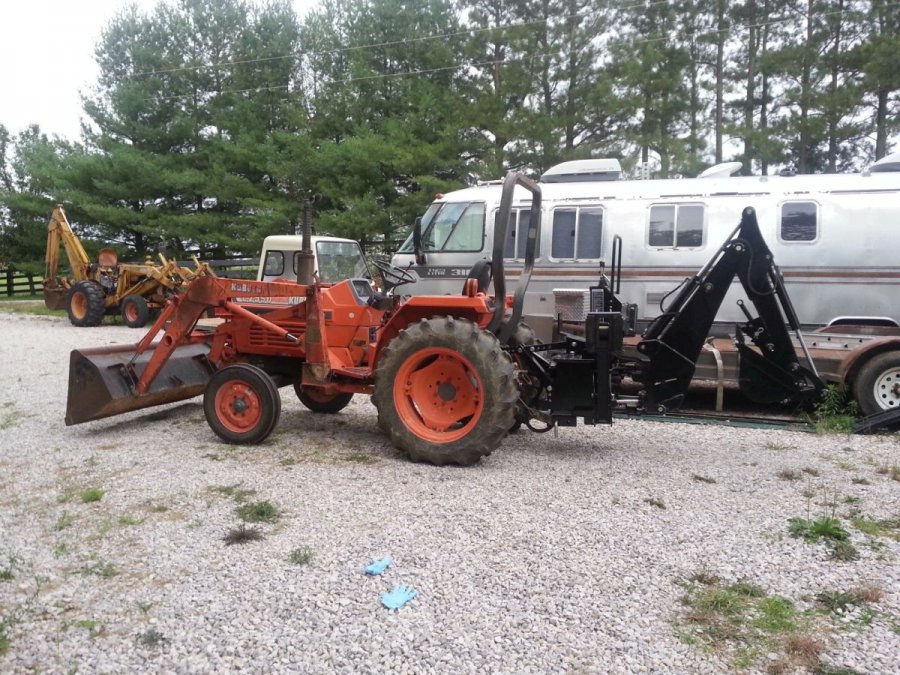




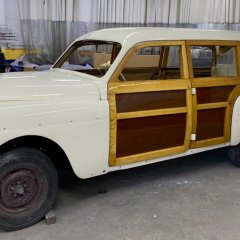










.jpg.d96bb56dcf39796a4d1c74b900bb90e8.jpg)






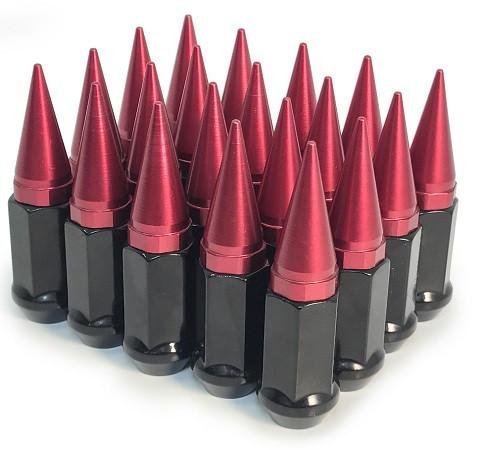
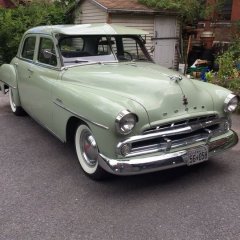


























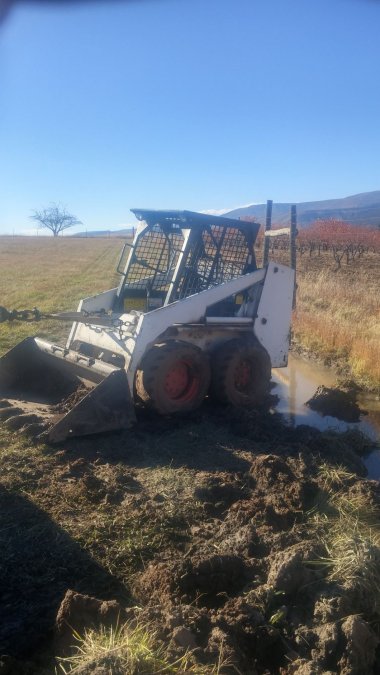









.jpg.da0106953d6a08f6ad754131a855d88f.jpg)


